VRED 2025.2 Release Notes
To ensure Autodesk VRED products runs to their potential, please ensure your hardware meets the minimum recommended system requirements.
These are the requirements, new features and improvements, fixed issues, and known issues and workarounds found in VRED 2025.2 products:
Requirement for VRED 2025.2
The following is required for VRED 2025.2:
- For Windows users, 2025.2 requires an NVIDIA RTX driver v.536.67 or above for RGB raytracing and 551.23 for spectral raytracing. To use DLSS-RR, you will need the NVIDIA driver v.537.13 or above; otherwise, VRED will default to the DLSS from version 2024.1.
- For Linux users, 2025.2 requires an NVIDIA RTX driver v.535.86 or above for RGB raytracing and 550.54 for spectral raytracing. To use DLSS-RR, you will need the NVIDIA driver v.535.104 or above; otherwise, VRED will default to the DLSS from version 2024.1.
- Linux dependency for Render Node - If working on a Linux machine, set your local directory to
/var/opt/Autodeskwith write access on the Linux machine that is running the VRED 2025.2 Render Node.
For VRED Core on Linux, as of 2025, the package, xcb-util-cursor, is a mandatory dependency. This is a prerequisite for any Qt 6.5 application to run on RedHat 8 or RedHat 9. The Qt libraries cannot be loaded without it and the following warning will appear if it is missing, "QtWarning: From 6.5.0, xcb-cursor0 or libxcb-cursor0 is needed to load the Qt xcb platform plugin". We also started supporting Linux RedHat 9 and dropped support for RedHat Enterprise Linux 7, as maintenance stopped June 24, 2024.
Fixed Issues
These are the issues we fixed in VRED 2025.2 products:
Animation
- Animations on copied materials can now be unshared and changed independently.
Cameras
- The Depth of Field in the Camera Editor > Camera Settings tab > Lens Attributes section, is now calculated correctly.
- Pasting tonemapping attributes now also works for the Sensor Response attribute when using a physical camera tonemapper.
General
- The denoiser in the GPU cluster is now working properly.
- Float values now have a precision of 6. This means 1000.123 will be displayed as 1000.12 and 1000.129 as 1000.13.
Illumination Channels no longer overlaps the arrow in the Renderpasses Rendering menu.
2025.1 2025.2 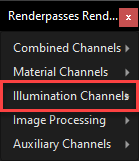
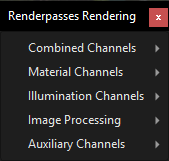
- Localized strings no longer overlap the arrow in the Renderpasses Rendering menu.
- Saving a file with multi-byte characters no longer crashes VRED 2025.1.
- Inlined image sequences can now be played when inlined with 2025.1.
Convert to Smart Reference no longer overlaps the arrow in the Reference menu.
2025 2025.2 
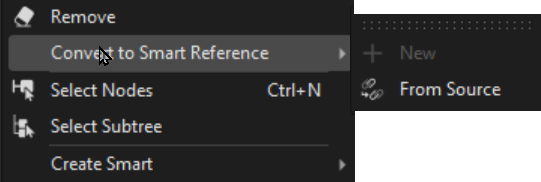
- Fixed capitalization issues within some menus.
- Fixed spelling issues in Render Settings > Raytracing Quality > Volume Quality > Mode.
- No
vrKernelServiceserror occurs after New Scene is initiated.
- Removed superfluous items from the Re-Import dialog.
- When a camera is animated, the ICV is triggered, and FoV is changed, the FStop remains constant.
- Using Convert > Mesh on a specific mesh no longer causes a crash.
- Local clipping planes are now evaluated correctly for mouse interactions in the viewport.
- Switching to HDR10 Display no longer crashes when Depth of Field Autofocus is enabled.
Importing
- Metadata appears for .osb files imported with Import as Smart Reference enabled.
- Alias .wire files with Import Lights enabled can now be imported into VRED.
- Alias .wire files with Enable Stitching unchecked can now be imported into VRED.
- A Catia V5 file using the lightweight importer no longer has geometric issues.
Materials
- When Ctrl + Enter is used to undock the render view and it is closed, the Material Editor no longer crashes, whether it is opened before or after the render view is closed. The material previews will not update until the render view is restored.
- When Enable Photometric Parameters is enabled, the Incandescence section colors values (set in the Color Picker dialog > Color tab) for a plastic material remain unchanged even after the dialog is closed, then reopened.
- In the Color Picker dialog, after inputting a red value (1, 0, 0), clicking Apply, then closing and reopening the dialog, the value remains unchanged (1, 0, 0).
- Fixed the environment "Boost Light" function to no longer cause infinite values in the changed image that lead to a "black sun" and overall lighting that is too dark when in GPU Raytracing.
- Multi-selecting materials with dispersion no longer causes a crash.
Metadata
- There are no longer issues with setting string lists as metadata through the Python interface.
For Glass materials, Spectral Distribution for dispersion is editable. When Use Dispersion is enabled and Input Type is set to Spectral Distribution, click the IOR Spectrum option's Edit button. This opens a dialog for editing the spectral distribution.
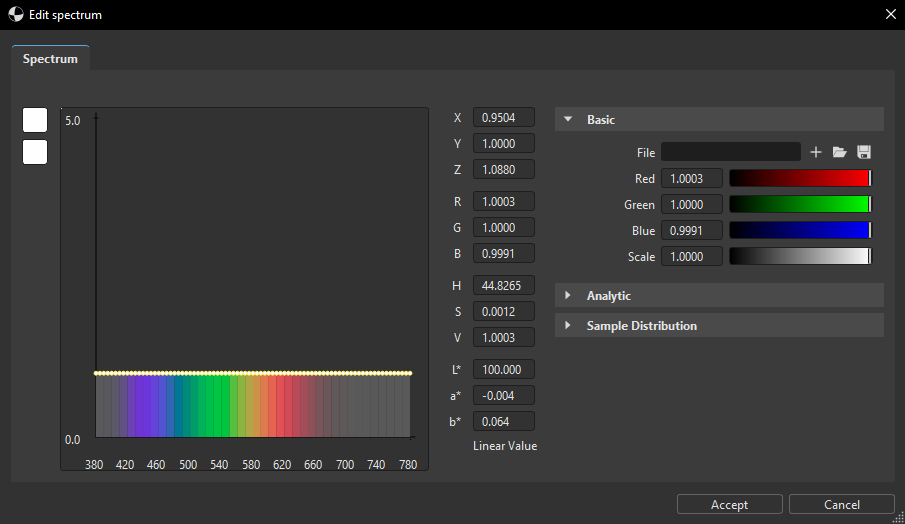
OpenGL
- When Double Sided is disabled for an object in the Render Layer, the scene is saved, and reloaded, the object remains single sided in OpenGL.
- Tangents are correctly computed for skinned meshes in OpenGL.
- VRED no longer crashes when entering a large number of shadow lightsources in the Environment settings.
- In OpenGL, volumes no longer disappear when switching to an HDR10 display.
- When in OpenGL, the SSAO Blur Amount input value is now clamped, preventing any freezing issues.
- Fixed bump mapping for materials with planar texture mapping, ensuring surface normals are correctly oriented and reflections are accurate.
- Use Infinite Tiling is now applied to all Substance material textures.
OpenXR
- In OpenXR, the laser pointer issue when using Place tool has been corrected.
- In OpenXR, moving an object with the Place tool no longer crashes in mixed reality.
- In OpenXR, hands are visible in CPU and GPU raytracing when rendered.
- In OpenXR, the stuttering issue for the StreamVR runtime when depth composition layer is enabled has been resolved.
- The Varjo XR-3 depth buffer can now be disabled when using an OpenXR HMD.
- Using
setMixedRealityEyeOffsetPercentagein OpenXR for MR with Varjo HMDs, changes the scaling between video passthrough and rendering.
Preferences
- If changes are made to the Preferences > Import/Export > File Options > Scene section and applied, they are also automatically applied to the Import File(s) dialog.
- The resolution of A1 image size preset in the preferences is now correct.
- Python Sandbox-allowed modules no longer accumulate each time the preferences are opened.
Raytracing
- In VR, the X-Ray material on hands looks correct when in raytracing mode.
- Tangents are now accurately computed for skinned meshes in GPU raytracing, resulting in correct illumination.
- For CPU raytracing, a VDB emission is no longer fully transparent when using multi-scattering.
- For CPU raytracing, we fixed the slightly too sharp reflections on the rough clearcoat (roughness > 0).
- When Substance materials are CPU raytraced, the occlusion renderpass is no longer blank.
- For CPU raytracing, there is no longer an issue with disk light in Approximated mode that have a very small roughness value.
- When GPU raytracing, the renderpasses are now updated from the Render Queue, no longer causing Cuda errors.
- A glass material with Density and Exterior Color set to white no longer produces errors.
- Spectral Distribution for Dispersion is now editable.
Rendering
- The VDB volume bounding size is now respected correctly.
Scenegraph
- In the tag view, Show/Hide is now applied to objects and their clones.
- Tag view performance have been improved for large scenes with many nodes.
- Hiding objects in large scenes no longer causes Scenegraph lags.
Sceneplates
- The UI now updates depending on the lock/unlock state of a sceneplate asset.
Scripting
- The
childrenFileConversionFinishedsignal forvrFileIOServiceis now always emitted.
- Using
removeNURBS(getRootNode())no longer crashes VRED.
- Use Automatic Photon Radius have been added to the VRED Python API V1 documentation.
- The "cannot set property Accessible." error no longer appears in the console window when starting VRED with
--console.
- Fixed
vrSessionService.blockSync(commandTypeName)to only block the specified command type, instead of everything.
- Enum values in
vrNodeService::traverseare working again.
- Added
vrMaterialEntryTypeto the Python API v2 documentation.
Substance
- The VRED interface now respects the substance parameter grouping order of imported .sbsar files.
Tranform Module
- The Transform module no longer crashes randomly.
UI
- The expand/collapse triangles in Preferences keep their size when DPI scaling is used.
- Cluster-related progress strings are now localized.
- Fixed the Encrypted HTTPS Only status when the Enable Web Server option is disabled.
UV Editor
- In the UV Editor > Visualize section, when Show Texture > Lightmap Base Illumination (Floor) is selected and a preview image appears in the Advanced tab > Lightmap section > Base Illumination (lightmap illumination textures) tab, the UV view is not transparent, but displays shadowed areas.
- In the UV Editor, material textures (hdr formats) are no longer tonemapped when Preferences > Scene > Bake > Lightmaps > Tone Map Previews is enabled.
Varjo
- The Python function,
vrHMDService.setDepthTextureEnabled, works again as expected.
XR
- The orientation of the laser pointer will now match the the orientation of the hands.
Known Issues and Workarounds
Cluster Manager - When saving renders from the Cluster Manager job queue to a network folder, VRED fails to create an output file or trigger a warning.
A workaround for this is to change the file name, the path in Render Settings, and then check to see if the image already exists in that location.
Cluster Failure - A cluster will fail to start, if the last node is localhost in the cluster list.
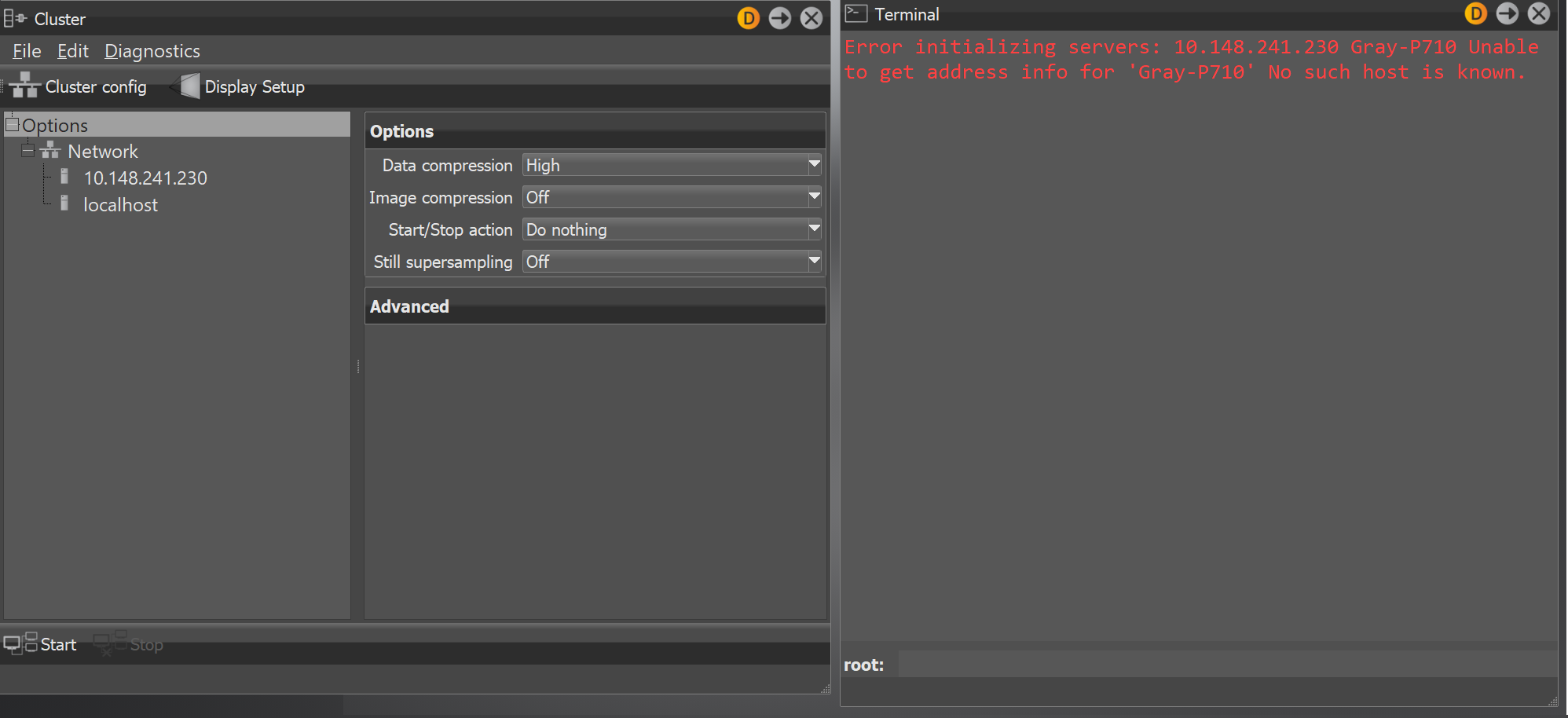
Explanation: A pipeline and PCs at the beginning of the list need to reach PCs later in the list by the given Name or IP Address. If localhost is used, VRED tries to use the hostname of the master PC; however, PC 10.148.241.230 doesn't know GRED-P710 by name.
Internet Explorer dependency - If installing VRED 2020 on a machine running Internet Explorer, Internet Explorer 10 is needed to display the Let's get started screen.
A workaround for this is to create a deployment installer. When creating deployment installer images, VRED starts up fine for all license types. In the VRED user control popup menu,
- Sign In works
- Sign Out And Quit (user license) won't work
- Manage License won't work
- Explore Purchase Options sort of works, but the web page looks strange due to the older version of Internet Explorer